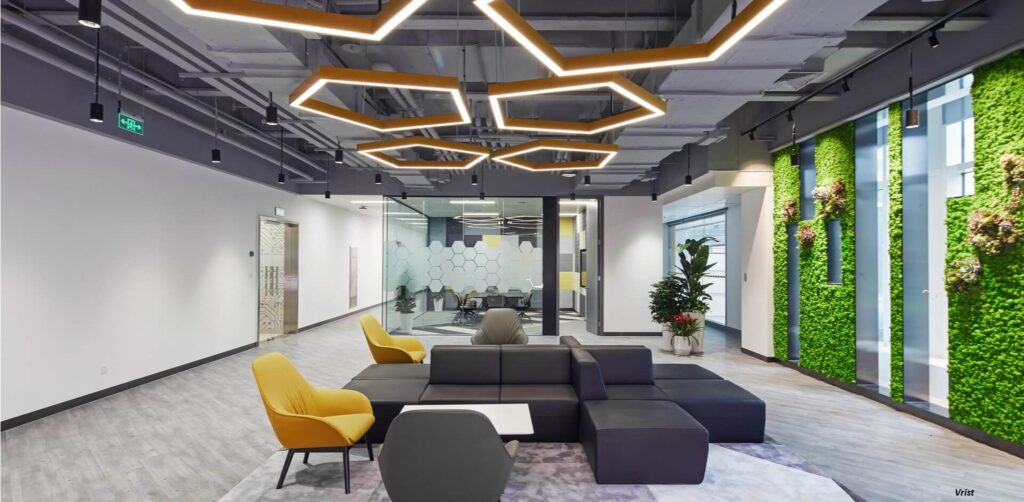Numerous people frequently visit a commercial space. In any open space, including a brick-and-mortar store, a workspace, a school, a clinical benefits office, or some other public space, proper space planning is fundamental for the general need of the client, employee, student, and patient.
The numerous specifications, codes, and unique details that must be taken into account during the design process make commercial interior design challenging.
In order to guarantee that the design and remodel project stays on track and that no detail is overlooked, commercial interior designers Gurgaon are heavily involved in every stage of the construction process. The owner of the business could lose money if mistakes go unnoticed, workers don’t finish their work, or scheduling conflicts cause products to arrive late. As a result, interior designers require project planning, which includes defining the project’s scope, budgeting, and scheduling.
Planning the space should be done in advance. For creating an outstanding interior space, consider the following five efficient strategies:
Planning is essential when designing an office space. When planning for space, you should take into account your business’s ever-evolving needs. For eg. The business model of a growing technology company places an emphasis on innovation and adaptability, and this should also apply to the office space.
This is how to proceed.
Make sure to include flexible spaces and structures that can be moved or removed easily later during the planning stage. Make it feasible for the business to put forth those transformations with negligible attempt, whether or not the organization chooses to present new, significant stylistic layout accents or believes a total overhaul in five years should stay aware of patterns.
Utilize software designed specifically for commercial design.
Due to its extreme accuracy, expert business plan software with a built-in PC-aided planning framework is ideal for business space planning. By allowing you to make precise 2D and 3D drawings of the space, you can speed up the design process and make your project more accurate.
Some product arrangements also include underlying producer indexes and programmed statement age instruments to help you finish your work as quickly as possible. By creating 3D renderings, customers can also see the finished product before it is built.
Make use of cutting-edge technology.
organizations whose day-to-day operations are overseen by technological advancements Technology is used for everything from sales to order processing to collaboration to communication in today’s economy and commercial interior design.
When designing for a business, take into account the function of each space and organise your layout accordingly. Will there be integrated tablets or computers in addition to projectors and screens? Is there a system of central control in place?
After you have figured out the technology, which helps us get to the next point, you may need to figure out how to hide some things in order to get a streamlined and pleasing appearance.
Integrate form and function
In a commercial design project, the functionality should take precedence over everything else. Furthermore, with good reason. A company’s top priority is providing specific services to customers in an environment that supports those services.
However, one should never underestimate the power of aesthetics. Take a look at the lobby of a five-star hotel. A seating/lounge area, chairs, a reception desk, and lighting are all essential to its basic functionality. Improving the customer experience necessitates a grand chandelier, custom sofas, a coffee table, a color scheme that is consistent with the brand, lavish tile flooring, wall art, and other opulent aesthetics.
Adhere to all building codes to ensure safety.
Safety must come first in any design or construction project, especially one that involves commercial spaces. Your obligation is to design around the different development regulations that ought to be conformed to guarantee the security of the people who will use the space.
Even though form and function are so important to Delhi’s commercial interior design, safety always comes first, even if it means giving up some things.




